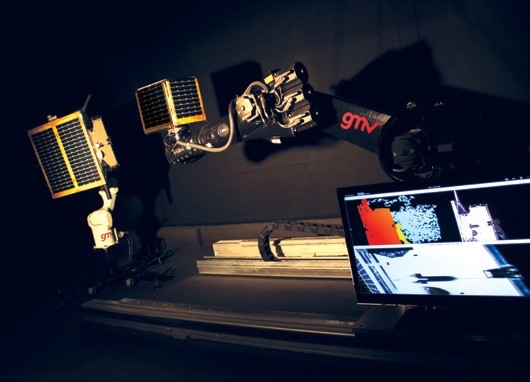GMV is working to defend the planet from asteroid thread

It is now crucial for our society to comprehend the real threat posed to our planet by asteroid strike, especially in light of its increasing communications - and technology-dependence. We urgently need to come up with a remedy for this threat.
Planetary defense calls for the development of technologies such as Guidance, Navigation and Control (GNC) of spacecraft in the vicinity of asteroids. This allows us to carry out missions to study the characteristics of asteroids and deviate them by impact if need be.
GMV has been actively working on projects of this type for years now. AIM (Asteroid Impact Mission), as part of the AIDA program (Asteroid Impact and Deflection Assessment), aims to study the effect of the impact of the NASA DART probe against the moon of the Dydimos asteroid, while also demonstrating new optical communication technologies in space as well as studying and characterizing the internal and surface structure of Didymos and its moon; FCS ATOMIC (Flight Control System Assessment Toolbox for Optimal Mission Cost and Performance) is a GMV-led initiative that sets out to establish a real framework for a Flight Control System (FCS) made up by FDS and GNC systems plus their corresponding interfaces to weigh up the feasibility of future missions. Last but not least, TAIM (Asteroid Impact Mission Thermal Infrared Imager) is the name given to a study focusing on the development of a thermal imaging camera to capture images in the infrared spectrum for ESA’s Asteroid Impact Mission (AIM).
During this year GMV has also been actively participating in the European Commission’s asteroid-strike planetary defense project, NEOShield-2 . This 4.2- million-euro project, which kicked off back in 2015, is an EU H2020 R&D initiative primed by Airbus Defense and Space GmbH and involving 11 other European firms. NEOShield-2 is developing the necessary space-mission technology to divert threatening asteroids. The project also studies how to measure deviation attempts with precision and how to carry out in situ analyses. Studies are now being made of astronomical observations, modeling, simulations and the physical characterization of near earth objects (NEOs) in order to gain a better understanding of their physical properties. Lastly, work is underway on drawing up a European strategy for future mission-associated research activities.
Within NEOShield 2 GMV has taken on the development of the autonomous guidance, navigation and control (GNC) system based on artificial vision for landing the spacecraft on the asteroid, collecting samples weighing at least 30 grams and returning them to earth. This type of mission is crucial for accurately studying the asteroid’s features before deflecting it. GMV is also developing and running testbeds for ground validation of the NEOShield-2 consortium’s 3 GNC systems, namely the Optical Navigation Testbed and GMV’s inhouse Advanced Robotic Testbed platform-art©. These two between them allow ground simulation of space-scenario conditions and real time stimulation of the spacecraft’s onboard computers and sensors.